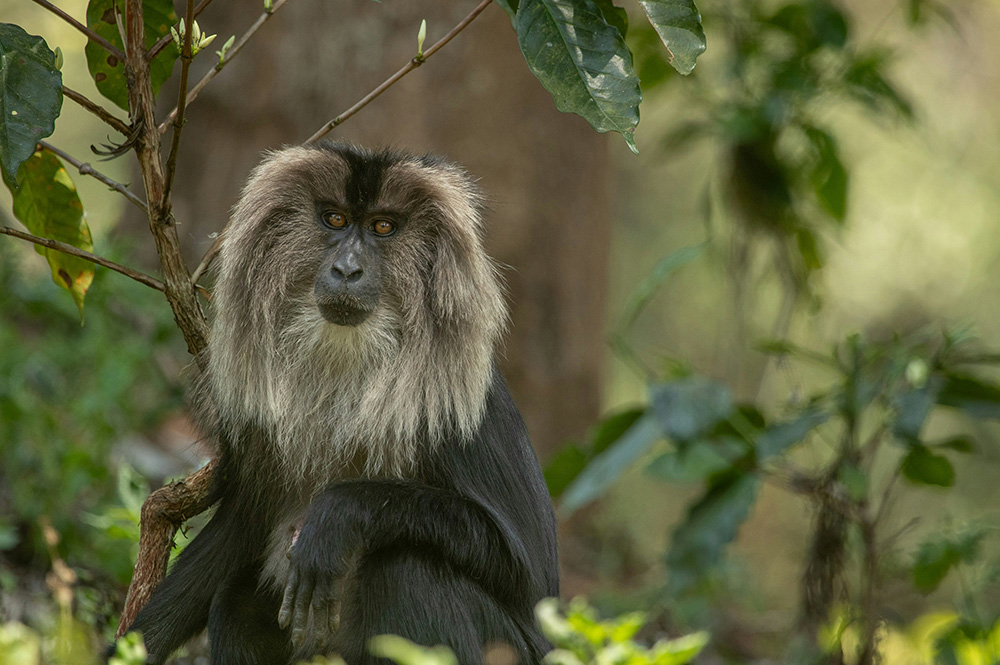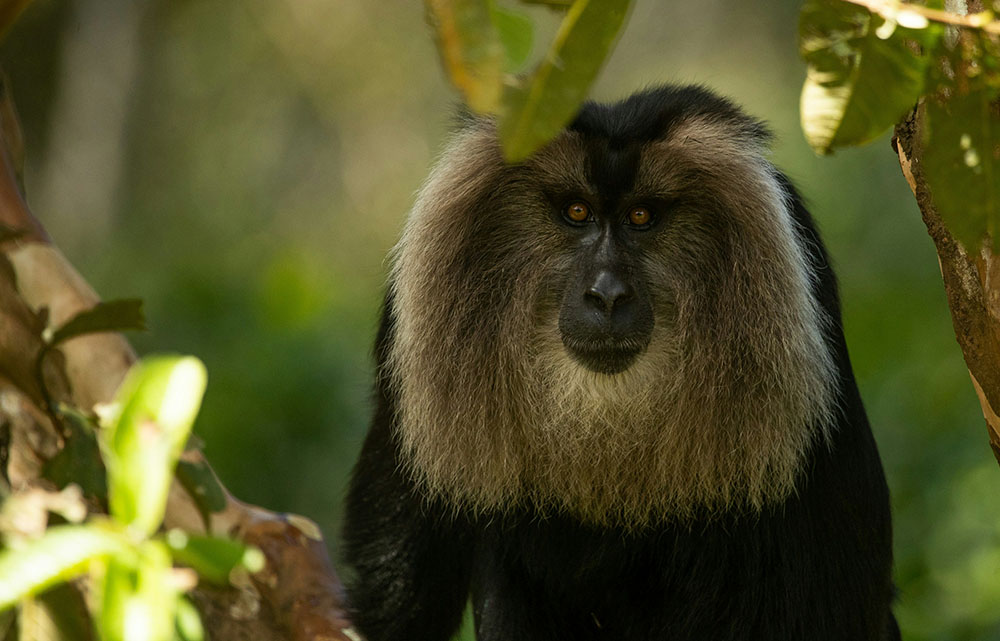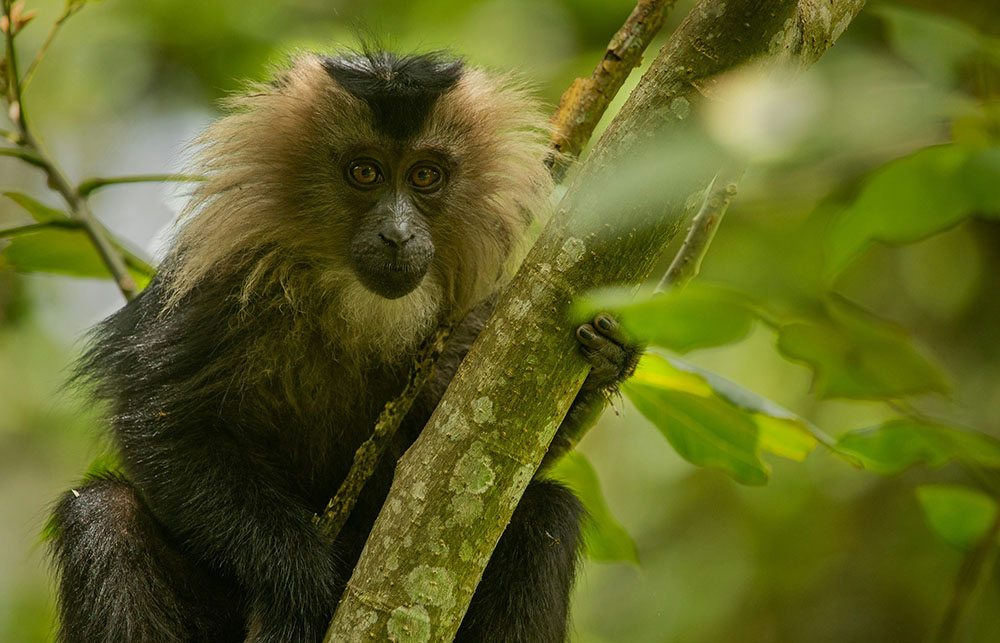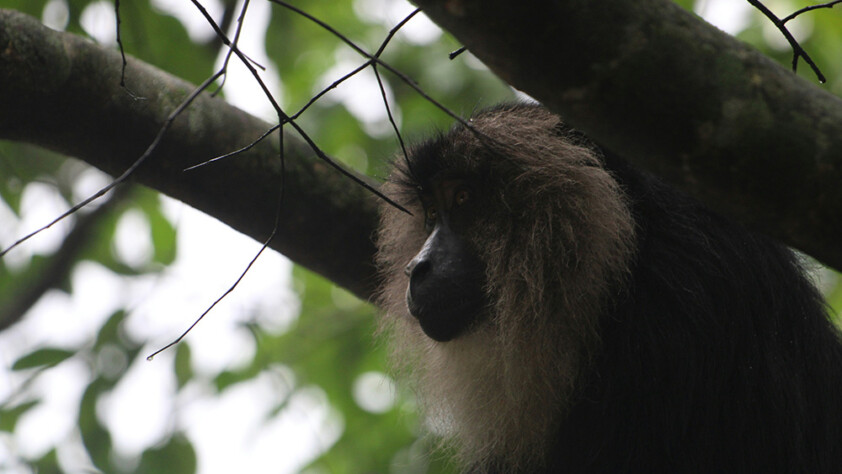The Lion-Tailed Macaque (Macaca silenus), with its distinctive mane and tufted tail, is one of the most striking and endangered primates in the world. Endemic to the Western Ghats of India, this species plays a crucial role in the biodiversity and ecological balance of its habitat. This article explores the characteristics, habitat, behavior, threats, and conservation efforts aimed at protecting the Lion-Tailed Macaque.

Characteristics and Physical Appearance
1. Distinctive Features:
The Lion-Tailed Macaque is easily recognizable by its unique appearance. Adults have a prominent silver-white mane that frames their dark, expressive faces, resembling a lion’s mane, hence the name. They have a slender body, with males weighing between 15 to 22 pounds and females between 10 to 15 pounds. Their tails are long and have a tuft at the end, similar to that of a lion.
2. Longevity and Social Structure:
These macaques have a lifespan of around 20 to 30 years in the wild. They live in social groups typically consisting of 10 to 20 individuals, led by a dominant male. Social hierarchy is well-defined within these groups, with females often forming the stable core and males competing for dominance.
Habitat and Distribution
1. Endemic to the Western Ghats:
The Lion-Tailed Macaque is found exclusively in the tropical rainforests of the Western Ghats, a biodiversity hotspot that stretches along the western coast of India. These forests, characterized by high rainfall and dense vegetation, provide an ideal habitat for these arboreal primates.
2. Preferred Habitat:
They are primarily arboreal, spending most of their time in the upper canopy of evergreen forests. They prefer undisturbed, primary forests, which offer abundant food resources and safe nesting sites. The states of Karnataka, Kerala, and Tamil Nadu host significant populations of these macaques.
Behavior and Ecology
1. Diet:
The Lion-Tailed Macaque is omnivorous, with a diet consisting of fruits, leaves, seeds, flowers, and insects. They are known to forage for food in the treetops, using their dexterous hands to pluck fruits and their sharp teeth to crack open hard shells. Their diet also includes small vertebrates and bird eggs, making them opportunistic feeders.
2. Reproduction:
Breeding in Lion-Tailed Macaques is not strictly seasonal, though it often peaks during the monsoon months when food is plentiful. Females give birth to a single offspring after a gestation period of about six months. The young are cared for by the mother and other group members, learning crucial survival skills through observation and interaction.
3. Social Interaction:
These macaques are known for their complex social behaviors and vocal communication. They use a variety of sounds, facial expressions, and body postures to communicate within their groups. Grooming is a common social activity that helps strengthen bonds and maintain hygiene.


Threats to Survival
1. Habitat Destruction:
One of the most significant threats to the Lion-Tailed Macaque is habitat loss due to deforestation, agricultural expansion, and infrastructure development. The fragmentation of forests leads to isolated populations that are vulnerable to inbreeding and local extinction.
2. Human Encroachment:
Human activities, including logging, plantation agriculture (especially tea, coffee, and cardamom), and road construction, encroach on their natural habitats. This not only reduces available living space but also increases the risk of human-wildlife conflict.
3. Poaching and Hunting:
Though hunting of Lion-Tailed Macaques is illegal, they are sometimes targeted for their meat and for the pet trade. Additionally, their body parts are occasionally used in traditional medicine.
4. Climate Change:
Climate change poses a long-term threat by altering the ecosystems of the Western Ghats. Changes in temperature and rainfall patterns can affect food availability and forest composition, impacting the macaques’ survival.

Conservation Efforts
1. Protected Areas:
Several protected areas and wildlife sanctuaries have been established within the Western Ghats to safeguard the habitat of the Lion-Tailed Macaque. Notable protected areas include:
- Silent Valley National Park, Kerala: Home to a significant population of Lion-Tailed Macaques, this park is a critical conservation site.
- Kalakad-Mundanthurai Tiger Reserve, Tamil Nadu: This reserve provides a safe habitat for these primates along with other wildlife.
2. Habitat Restoration:
Efforts are underway to restore degraded habitats by reforesting cleared areas and connecting fragmented forests with wildlife corridors. These initiatives help maintain genetic diversity and allow macaques to move freely between forest patches.
3. Community Involvement:
Engaging local communities in conservation efforts is crucial. Programs that promote sustainable livelihoods, eco-tourism, and awareness about the importance of preserving macaque habitats can reduce human pressure on forests.
4. Legal Protection:
The Lion-Tailed Macaque is listed under Schedule I of the Wildlife Protection Act of 1972, providing it with the highest level of legal protection in India. Enforcement of these laws is essential to curb poaching and habitat destruction.
5. Research and Monitoring:
Ongoing research on the ecology, behavior, and genetics of Lion-Tailed Macaques provides valuable data for conservation planning. Monitoring population trends and health helps assess the effectiveness of conservation measures and identify emerging threats.
6. Education and Awareness:
Raising awareness about the plight of the Lion-Tailed Macaque through education programs, media campaigns, and community outreach is vital. Informed and engaged citizens are more likely to support and participate in conservation efforts.


